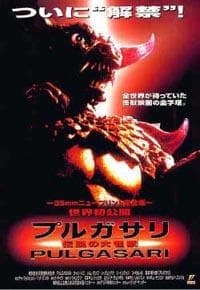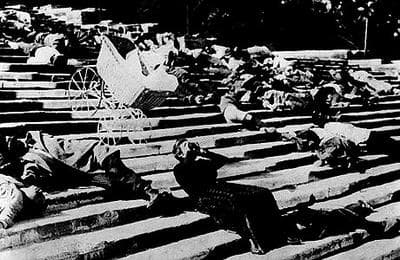Advertisement
The Films That Dictators Loved
Resume
Sacha Baron Cohen's latest film, "The Dictator," opens Wednesday to mixed reviews. Stephanie Zacharek at Movieline.com calls it "indefensible and hilarious, an unruly thing that invites you to laugh at things you feel you shouldn't."
Starring Cohen as the power-mad leader of a fictional country in North Africa who ends up wandering the streets of New York, the film is a send-up of despotism and American manners.
"Yes, you will be offended," writes critic Leigh Paatsch in Australia's Herald Sun. "But there's no hope of not laughing often at a film dedicated in loving memory of Kim Jong Il."
As it happens, the late Kim Jong Il of North Korea fancied himself a film connoisseur, as did a number of other notorious dictators.
Kim Jong Il And 'Pulgasari'
In 1978, when Kim Jong Il was just the dictator-in-waiting of North Korea, he reportedly ordered the kidnapping of the most famous film director in South Korea. Shin Sang Ok was imprisoned for years in Pyongyang, and forced to make movies under Kim's supervision. Shin and his wife, an actress, produced seven films for Kim, including "Pulgasari" (1985), which has been described as a Communist version of "Godzilla." Kim Jong Il is the film's executive producer.

- The Guardian: The Producer From Hell
Mao Zedong And Bruce Lee
China's Mao Zedong was another leader who had a taste for film. When his doctors told him to rest his eyes and give up reading, Mao turned to movies. He became a huge fan of Bruce Lee's martial arts films and is reported to have called Bruce Lee a hero after watching 1971's "Fists of Fury."
Joseph Stalin And 'Battleship Potemkin'
Joseph Stalin considered himself the movie maven of his day, and supervised every aspect of Soviet filmmaking — including having filmmakers who crossed him, killed. Stalin is known for commissioning a number of films by master filmmaker Sergei Eisenstein, with whom he had a tumultuous working relationship.
Eisenstein's films are required viewing in many introductory film classes, and as his great-grandnephew Paul Eisenstein tells Here & Now, "No scene in film history may be more recognized than the "Steps of Odessa" sequence in the movie Potemkin."

"Battleship Potemkin" (1925) is one of Eisenstein's most famous films, and changed filmmaking forever by moving away from the standard method of placing a camera in one place and rolling. Eisenstein created the idea of using mise-en-scene, a term that refers to the visual narrative that is created by factors like camera positioning, use of depth and space in a film.
"Ironically, this tremendous focus on creating a new vision of what cinema should be...ran afoul of what they called Soviet socialist realism," Paul Eisenstein said.
It was the first time Sergei Eisenstein got in trouble with Stalin and his regime, but not the last.
His 1927 film "October" was criticized for not glorifying Stalin enough, and mentioned Leon Trotsky, who was Stalin's nemesis. But Eisenstein worked himself back into his good graces with "Alexander Nevsky," for which he won the Order of Lenin and the Stalin Prize.
"It was a film that was created at the time of the crisis between the Nazis and the Russians," said Paul. "And it helped motivate his country, and it was his first sound film, and it was just a remarkable piece."
But it was "Ivan the Terrible" that became Eisenstein's ultimate downfall, according to Paul. The film was originally planned as a trilogy, dramatizing the life of the Tsar that Stalin based himself on. Stalin loved "Ivan the Terrible - Part I," and awarded Eisenstein with another Stalin Prize for it, but disapproved of Part II.
"Stalin called the film unsuccessful and erroneous," Paul said. "And when the third part was supposed to come out, all the censors over there effectively destroyed it."
Paul says this disaster "was pretty much [Eisenstein's] undoing," and led to a heart attack and his early death.
"He was only about 50 years old," he said. "It was a tragedy."
If Sergei Eisenstein had lived, would he have become a great filmmaker outside of the Soviet Union? Paul says Eisenstein did go to Hollywood in the 1930s to work for Paramount Studios, but it didn't pan out at the time.
"One of the great ironies of that era I think is that Hollywood was as scripted and rigid about what it filmed as the Soviet Union did," said Paul. "And it had as much trouble dealing with an auteur with his own unique vision as did Stalin."
Guest:
- Paul Eisenstein, great-grandnephew of filmmaker Sergei Eisenstein
This segment aired on May 16, 2012.